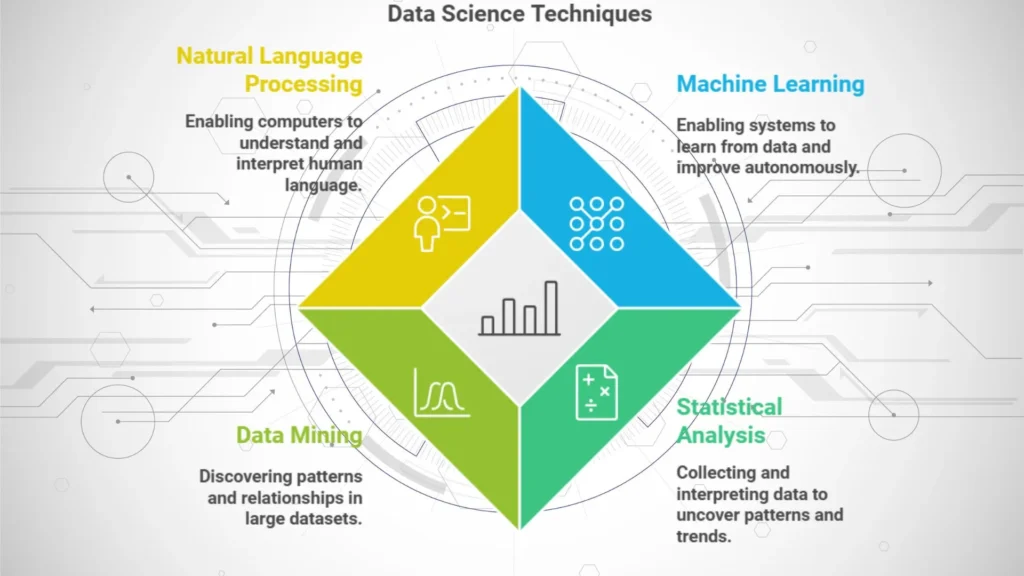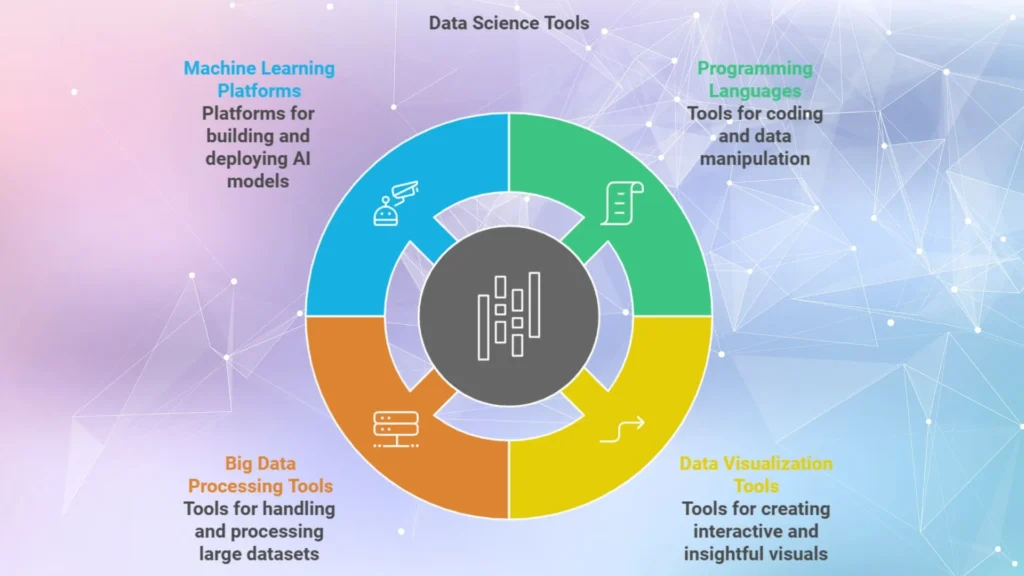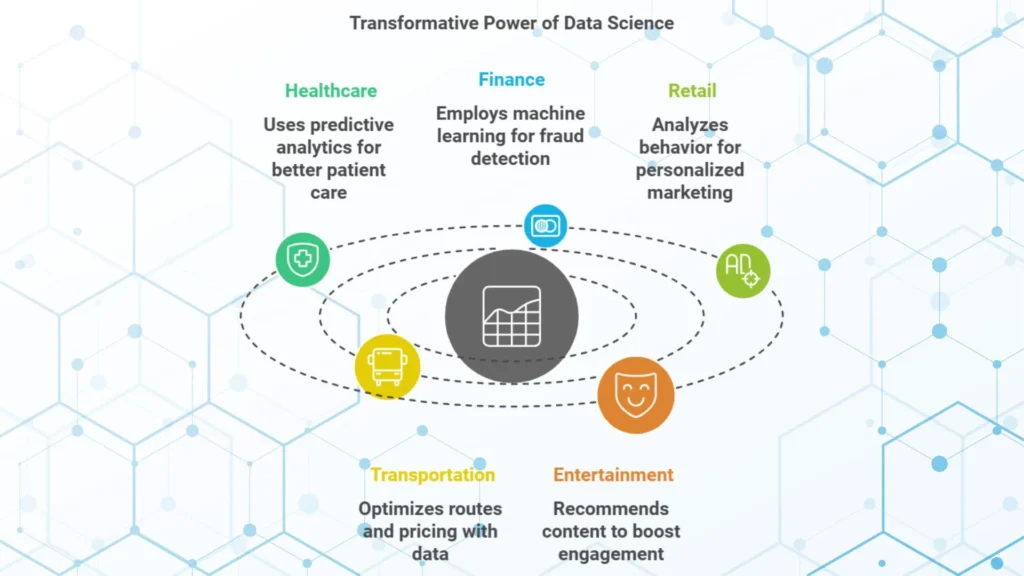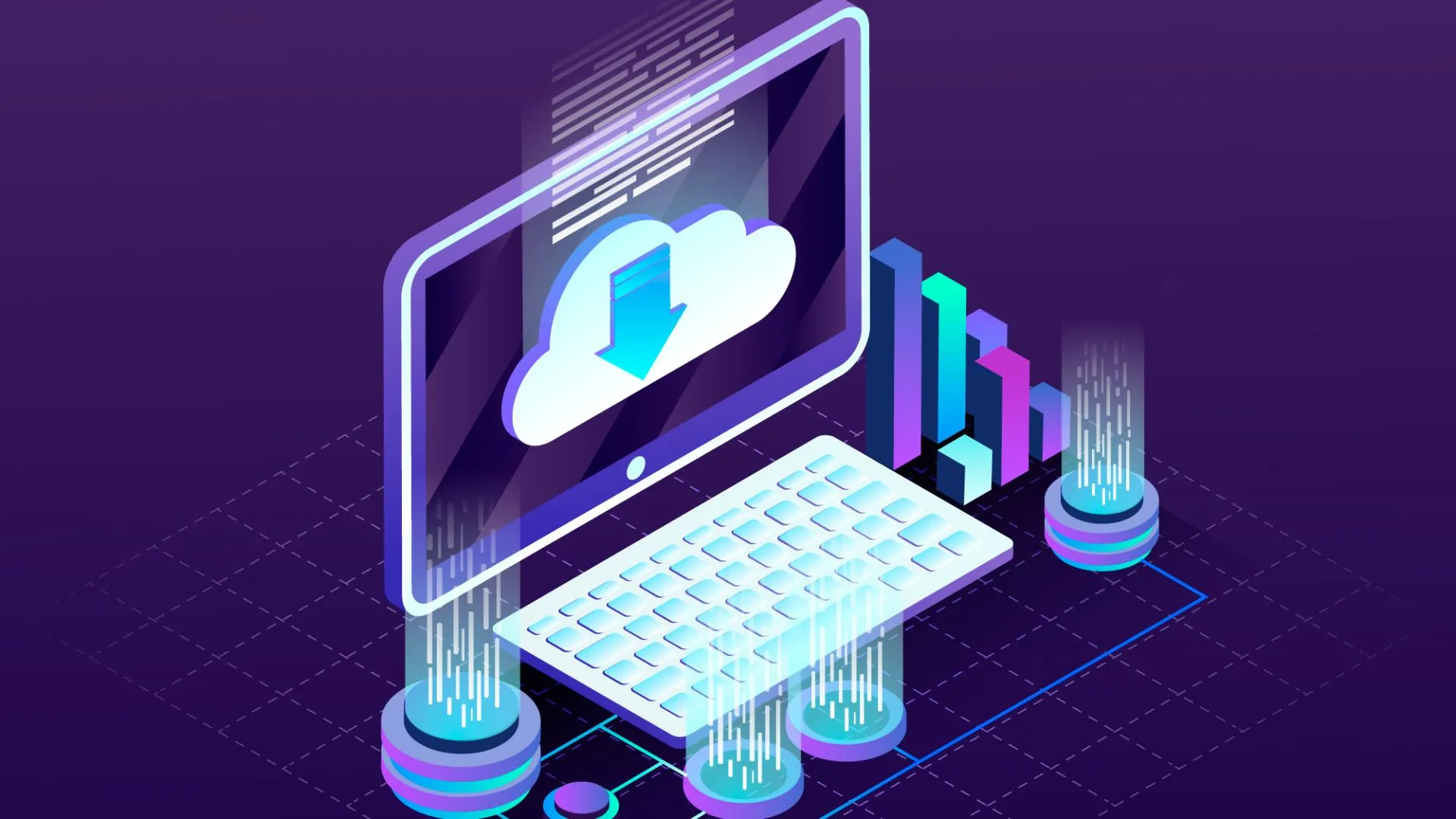Data science has transformed the way we analyze, interpret and utilize the data. In this world where data is generated at an enormous rate, the businesses, governments and individuals rely on data science to make informed decisions, predict trends and solve complex problems.
In this guide, we shall discuss what is data science, also we shall find key techniques and tools used in the field and explore its real world applications. By the end, you shall have a clear understanding of the power and potential of data science as well as data analytics.
What is Data Science?
Data Science is the study of data to extract valuable information. It combines elements of statistics, computer science and domain knowledge to analyze, process and interpret large datasets. Data science differs from data analytics in its depth and approach. Although data analytics focuses to interpret existing data to make decisions, data science creates models and uses algorithms to predict future trends and make automated decisions.

Key Techniques in Data Science
Data science employs various techniques to analyze data and make predictions. Here are some of the most popular ones:
1. Machine Learning (ML)
– Definition: Machine learning is a subset of artificial intelligence (AI) that enables systems to learn from data and improve over time without explicit programming.
– Examples: Netflix’s recommendation engine, which suggests content based on user behavior, is a common application of machine learning.
– Types of Machine Learning:
– Supervised Learning: Models are trained on labeled data (e.g., predicting house prices based on historical sales data).
– Unsupervised Learning: Models identify patterns in unlabeled data (e.g., grouping customers based on purchasing behavior).
– Reinforcement Learning: Models learn by interacting with an environment and receiving rewards or penalties (e.g., training autonomous robots).
2. Statistical Analysis
– Definition: Statistical analysis involves collecting, analyzing and interpreting data to uncover patterns and trends.
– Example: In finance, statistical analysis helps to assess risk and predict stock movements.
– Key Techniques:
– Descriptive Statistics: Summarize data (mean, median, mode).
– Inferential Statistics: Draw conclusions from data samples and make predictions for larger populations.
3. Data Mining
– Definition: Data mining is the process of discovering patterns and relationships in large datasets.
– Example: Retail companies use data mining to find purchase patterns, like customers who buy diapers also tend to buy baby wipes.
– Common Techniques:
– Association Rule Learning: Identifying relationships between variables (e.g., “People who buy X also buy Y”).
– Clustering: Grouping similar data points together, useful in customer segmentation.
4. Natural Language Processing (NLP)
– Definition: NLP is a branch of AI focused on enabling computers to understand and interpret human language.
– Example: Chatbots and voice assistants like Siri and Alexa use NLP to understand and respond to user requests.
– Techniques in NLP:
– Text Analysis: Analyzing sentiment, intent and topics in text data.
– Speech Recognition: Converting spoken language into text for applications like transcription.

Popular Tools in Data Science
Data scientists rely on a variety of tools to work with data. Here are some of the most widely used:
1. Programming Languages
– Python: Python is a versatile language with powerful libraries for data analysis and machine learning, such as Pandas, NumPy and Scikit-Learn.
– R: R is popular for statistical analysis and visualization, with libraries like ggplot2 and dplyr.
2. Data Analysis and Visualization Tools
– Tableau: A user friendly tool for creating interactive data visualizations.
– Power BI: A Microsoft tool that helps businesses visualize and share tips from data.
– Matplotlib & Seaborn: Python libraries for creating detailed visualizations.
3. Big Data Processing Tools
– Apache Hadoop: An open source framework for processing large datasets across distributed computing environments.
– Apache Spark: A fast, in memory data processing engine, ideal for large scale data processing.
4. Machine Learning and AI Platforms
– TensorFlow: An open source platform by Google, widely used for building machine learning and deep learning models.
– Keras: A user friendly library that works on top of TensorFlow for quick model building.
– PyTorch: A popular deep learning framework developed by Facebook.

Applications of Data Science
Data science is applied across various sectors, which transforms industries and drives innovation. Here are some notable applications:
1. Healthcare
– Example: Data science enables predictive analytics to identify patients at high risk for diseases, which improves preventative care.
– Case Study: IBM’s Watson for Health uses AI to assist doctors to diagnose and treat patients by analyzing large amounts of clinical data.
2. Finance
– Example: Financial institutions use data science for fraud detection, credit scoring and algorithmic trading.
– Case Study: JPMorgan Chase uses machine learning models to detect fraudulent transactions by analyzing customer spending patterns.
3. Retail
– Example: Retailers analyze customer purchase history and behavior to personalize marketing strategies.
– Case Study: Amazon’s recommendation engine, powered by data science, accounts for a large percentage of the platform’s sales.
4. Transportation
– Example: Ride sharing apps like Uber and Lyft use data science to predict demand, optimize routes and set dynamic pricing.
– Case Study: UPS uses predictive analytics to plan delivery routes, which saves fuel and improves efficiency.
5. Entertainment
– Example: Data science helps streaming services recommend content based on user preferences.
– Case Study: Netflix uses data science to create personalized recommendations, which results in higher engagement and retention rates.

How Data Science Differs from Data Analytics
Although data science and data analytics are closely related, they serve different purposes:
– Data Science:
Focuses on creating models and algorithms to predict future outcomes and make decisions. It generally requires advanced knowledge of statistics, machine learning and programming.
– Data Analytics:
Primarily involves analyzing historical data to draw conclusions and make informed decisions. It is commonly used in business intelligence to interpret past trends.
In essence, data analytics is more focused on “What happened?” while data science explains about “What will happen?” and “What should we do about it?”
Key Takeaways
Here are the main points to remember:
– Data Science combines computer science, statistics and domain knowledge to extract infformation from data.
– Techniques like Machine Learning, NLP and Data Mining enable data scientists to make predictions and understand complex data patterns.
– Popular Tools include Python, R, Tableau and TensorFlow, which make data analysis accessible and efficient.
– Applications span industries, from healthcare to retail, which demonstrates the versatility and power of data science.
Conclusion:
Data science is changing industries by offering valuable information, tips and enabling smarter decisions.
For a business leader or for an aspiring data scientist, understanding the basics of data science opens up a world of possibilities. Embracing data science can help organizations to stay competitive, innovative and make better decisions to prosper in the global market.

